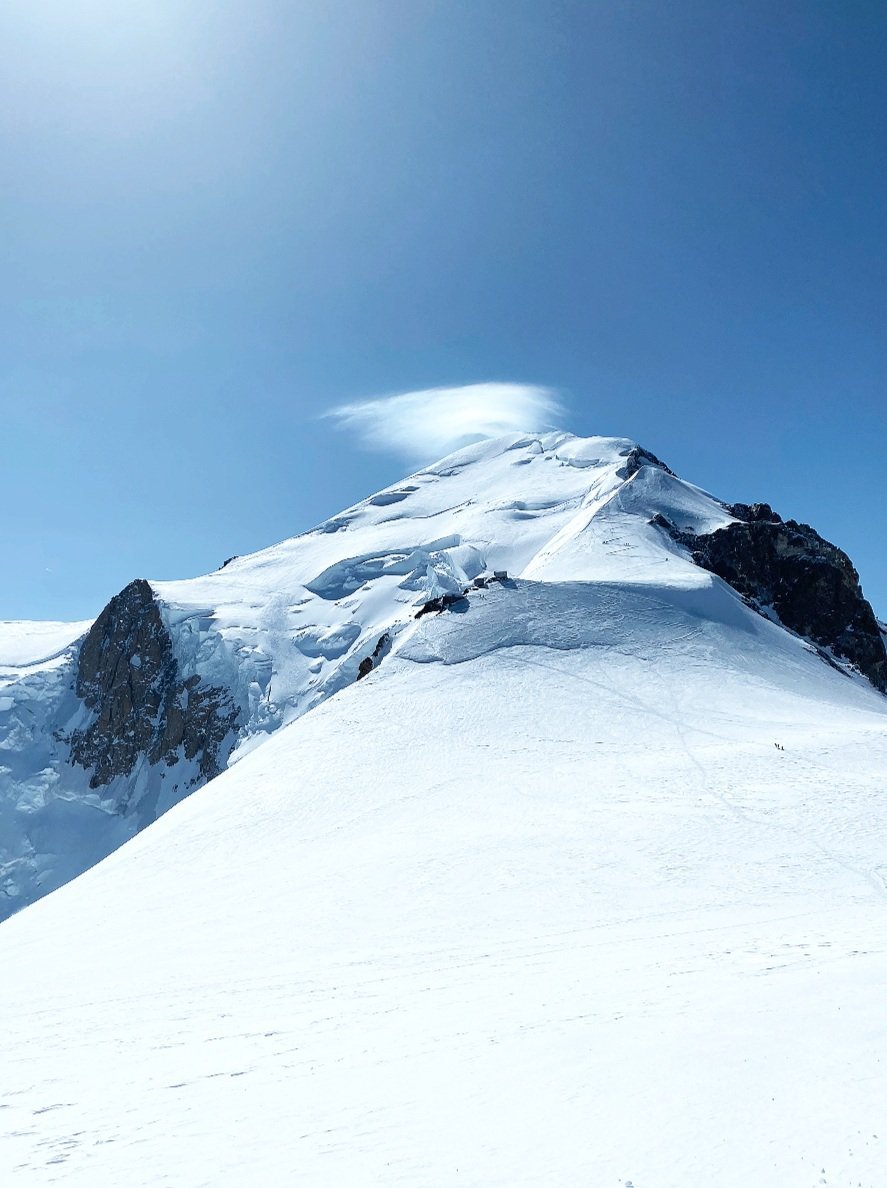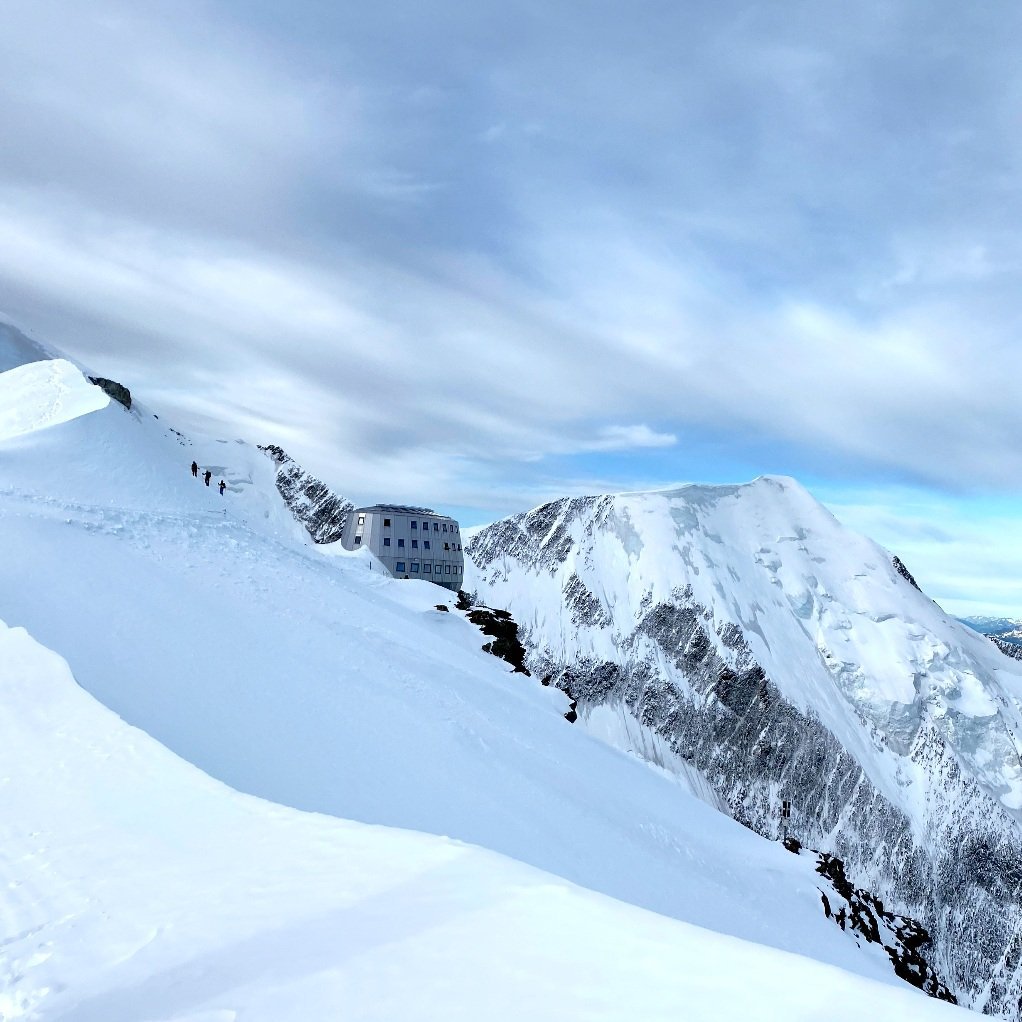Mont blanc
something hidden. go and find it.
Mountain: Mont Blanc
Altitude: 15,777ft | 4,807 m
Location: French Alps, France, 45.8326° N, 6.8652° EWhen did we stop learning poetry by heart? Learning poems and reading them was the epitome of erudition. We read poems during gatherings and we impressed our dates with it. It seems today poetry got marginalized to a niche isle of a bookstore or mandatory recital of "classics" at school. Yet studies on poetry confirmed that reading poems by heart not only can help make an impression, boost memory and maybe also control the mind. At least that is how I have felt on Mont Blanc while doing a rock-and-snow scramble from Tête Rousse hut to the Goûter and reciting to myself Radiard's Kipling famous poem "If".
Mont Blanc is a very popular climbing destination. Every year climbers around the world flock to the mountain in the hopes of the summit. They have been doing so for the past 200 years. The first documented ascent was in 1786 by local mountaineers Jacques Balmat and Dr Michel Paccard who did it for a cash prize (the value of the prize varies by various accounts). During the next two centuries, Mont Blanc was ascended by a variety of climbers: female daredevils Henriette d’Angeville and Isabell Straton climbed in long gowns, and daring winter soloists Walter Bonatti and Réné Desmaison opened more daring routes. Mont Blanc became such a household name that even fancy stationery proudly carries it's name signaling unobtainable perfection. It was probably the popularity of the mountain that made me underestimate it so much, since me and my climbing partner arrogantly started the ascend without acclimatization on the next day after landing in Europe from New York with a huge jet lag.
The most popular route from the charming village Chamonix takes on average 2 days. While the first leg of the journey to the first hut is nothing more than a hike on altitude, the subsequent parts present various sections of rocky, icy, and snowy terrains, some with the risk of rock-fall and crevices. One such section is the Grand Couloir. Located not far from Tête Rousse hut, the gully is only 100 meters wide and takes only a couple of minutes to cross. However, during the crossing, one becomes a pin in a bowling ally, due to the section's notorious unexpected rock falls. Past the Grand Colour, the route shoots up into a steep scramble of mixed rock and ice. Some sections have bolted cable lines to help safeguard the steeper section, that serve more as an emotional balast against the airy exposed drops. As we traversed this section twice - once on ascend and another on the descent, the only thing that distracted me from strenuous scrambling is poetry. And so during the very challenging part of the scramble, at 5am at the altitude of exposed to spacious views of below valley, I would recite:
If you can force your heart and nerve and sinew
To serve your turn long after they are gone,
And so hold on when there is nothing in you
Except the Will which says to them: ‘Hold on!’
Past the vertical scrambles lie glacier valleys with long gradual inclines. Ascend of these sections, like a lot of mountain climbing, is a monotonous activity. People dread monotony. To counteract monotony, humans invented entertainment valued in billions(as i write this, just in the US consumer spending is estimated at $37Bilions). But the sustained repetition of monotonous activities can be very meditative. Repetitious physical actions, like running and cycling, free our minds from decision-making letting them process and recover from prior stimulations. The key to monotonous mountain ascends is to "find the rhythm" - a balance between letting your mind dwindle from suffering yet being alert enough to cautiously observe the environment. I've heard someone called it "mediatic alpinism". And as we passed the glaciated valleys, poem reciting made my monotous crampon work rhythmically poetic:
If you can dream—and not make dreams your master;
If you can think—and not make thoughts your aim;
If you can meet with Triumph and Disaster
And treat those two impostors just the same;
A couple of hours from the summit we got caught up in the snowstorm. The clouds and fog slowly enveloped us and slowly swalowed the view of the summit towards which we were climbing. The only visible thing was the silhouette of our guide and the rope in between us, everything else was white. There were no views, nor never-ending horizon of the Alps. We did not feel on top of the world - just displaced in the whole-out. Since everything was white, our imagination filled the void with imagined dangerous crevasses and bone-chilling drops of the ridges. We just cautiously worked our crampons in the snow. When we descended to Refuge du Gouter at 3835m and clouds subsided revealing the below green valley, I looked back in the fog and recited:
“Something hidden. Go and find it. Go and look behind the Ranges
Something lost behind the Ranges. Lost and waiting for you. Go!”



